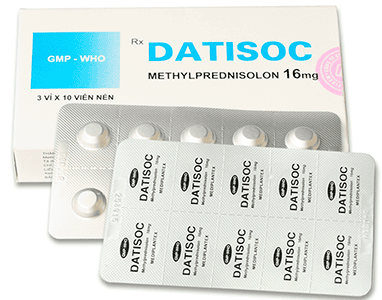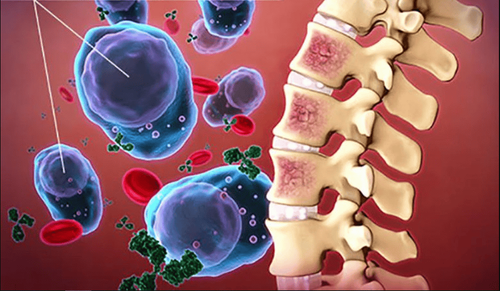This is an automatically translated article.
The active ingredient Leucostim is Filgrastim, a human granulocyte-stimulating factor produced by recombinant DNA technology. The drug has a stimulating effect on the production, maturation and activation of neutrophils to increase their migration, cytotoxicity.1. What is Leucostim?
Leucostim drug has the main ingredient is Filgrastim, a human granulocyte colony-stimulating factor produced by recombinant DNA technology with activity similar to the endogenous human granulocyte-stimulating factor. Leucostim helps regulate the production and mobilization of neutrophils from the bone marrow. The drug stimulates the activation, proliferation and differentiation of neutrophil progenitor cells. In some cases of chronic neutropenia, treatment with Leucostim also increased the production of eosinophils and basophils. When treatment was discontinued, circulating neutrophils decreased by 50% within 1-2 days and returned to normal within 1-7 days.2. Uses of Leucostim
Filgrastim is indicated to shorten the duration and complications of leukopenia in patients receiving cytotoxic chemotherapy, myelosuppressive therapy patients preparing for bone marrow transplantation.
Long-term use of Filgrastim increases the number of neutrophils, reduces the frequency and duration of infectious episodes in patients with congenital neutropenia, cyclic neutropenia, and leukopenia. idiopathic, drug-induced leukopenia, or non-myeloid cancer.
3. Dosage and usage of Leucostim
Leucostim is administered by infusion or subcutaneous injection, intravenous infusion at a dose of 0.5 MIU x 1 time / day. In patients receiving cytotoxic chemotherapy and autologous marrow transplantation, an initial dose of 2 MIU (20 mg/kg/day) of continuous SC infusion or 3 MIU of continuous IV infusion was given. Then adjust the dose according to the neutrophil response.
4. Contraindications of Leucostim
Leucostim is contraindicated in the following cases:
Hypersensitivity to drug components; History of severe allergy to human granulocyte-stimulating factors, such as filgrastim or pegfilgrastim; Congenital neutropenia with abnormal cytogenetics; Patients with liver and kidney failure.
5. Undesirable effects of the drug Leucostim
Patients taking Leucostim may experience undesirable effects including:
Frequency > 10%:
Cardiovascular: Chest pain; Dermatology: Skin rash; Gastrointestinal: Nausea; Hematology: Thrombocytopenia; Liver: Increased serum alkaline phosphatase; Nervous system: Dizziness, headache, fatigue; Neuromusculoskeletal: Back and bone pain; Respiratory: Cough, difficulty breathing; Other: Fever. Frequency 1 to 10%:
Cardiovascular: Hypertension; Dermatology: Alopecia, erythema, maculopapular rash; Endocrine and metabolic: Increased lactate dehydrogenase; Digestion: Diarrhea ; Genitourinary system: Urinary tract infections; Hematology: Anemia, leukocytosis, splenomegaly; Hypersensitivity: Hypersensitivity reactions; Immunity: Development of antibodies; Infection: Sepsis; Nervous system: Headache, anesthesia, insomnia; Neuromusculoskeletal: Arthralgia, limb pain, muscle spasms, musculoskeletal pain; Respiratory: Bronchitis, nosebleeds, upper respiratory tract infection.
6. Notes when using drugs
Allergic Reactions: Serious allergic reactions (including anaphylaxis) have been reported, usually with initial exposure to Filgrastim. Allergies can be treated symptomatically using antihistamines, steroids, bronchodilators, and or epinephrine. Allergic reactions may recur within a few days of discontinuation of initial treatment. Do not give Filgrastim products to patients who have had a severe allergic reaction to this active ingredient or to Pegfilgrastim. Permanently discontinue Filgrastim products in patients with severe allergic reactions; Alveolar hemorrhage: Reports of alveolar hemorrhage, manifesting as pulmonary infiltrates and hemoptysis have occurred. Hemoptysis resolved upon discontinuation of the drug; Capillary leak syndrome: Capillary leak syndrome, characterized by hypotension and albumin, edema, and hemoconcentration, may occur in patients receiving granulocytic cell-stimulating factors. People. Episodes of capillary leakage can vary in frequency and severity. If this syndrome develops, monitor closely and manage symptomatically. Be aware that capillary leak syndrome can be life-threatening if treatment is delayed; Skin Vasculitis: Moderate or severe cutaneous vasculitis has been reported, usually in patients with severe chronic neutropenia undergoing chronic therapy. Discontinue treatment when skin vasculitis occurs. Treatment may be restarted with dose reduction when symptoms have resolved and absolute neutrophil counts fall; Nephrotoxicity: Based on findings of uremia, hematuria (microscopic and gross), proteinuria, and renal biopsy, glomerulonephritis has occurred in patients receiving Filgrastim. Glomerulonephritis usually resolves after the dose of Filgrastim is reduced or stopped. If glomerulonephritis is suspected, evaluate the cause and consider dose reduction or discontinuation of therapy; Cytotoxic chemotherapy: Do not use Filgrastim products within 24 hours before and after cytotoxic chemotherapy because of the susceptibility of rapidly dividing myeloid cells; Respiratory distress syndrome: Acute respiratory distress syndrome (ARDS) has been reported. Evaluate patients for fever and pulmonary infiltrates or respiratory failure for ARDS. Discontinue the drug immediately in patients with ARDS; Pregnancy: Available data do not suggest an association between the use of Filgrastim during pregnancy and an increased risk of miscarriage, preterm labor, or adverse fetal outcomes after maternal use. use. It is recommended to use only when absolutely necessary and use the lowest effective dose; Lactation: Adverse effects have not been observed in nursing infants following the use of Filgrastim by the mother. According to the manufacturers, the decision to breastfeed during treatment should weigh the risks and benefits. Above is the general information about Leucostim drug. The drug has the potential to cause many side effects, so patients should consult their doctor or pharmacist before using.
Please dial HOTLINE for more information or register for an appointment HERE. Download MyVinmec app to make appointments faster and to manage your bookings easily.













